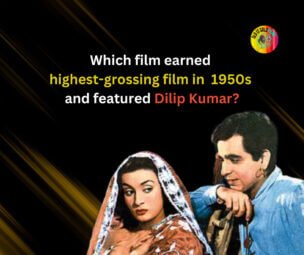The 1950s were a golden era for Indian cinema, with some of the most iconic films of all time being made in this decade. However, one film that stands out above the rest is the 1955 film “Aan,” which was not only the highest-grossing film of the 1950s but also featured the legendary actor Dilip Kumar in a lead role.
“Aan” was a historical drama that was directed by Mehboob Khan and featured Dilip Kumar in the role of Jai Tilak, a prince who returns to his kingdom to claim his rightful place as the king. The film also starred Nimmi, Nadira, and Premnath in pivotal roles and was shot in Technicolor, which was a rare feat in Indian cinema at the time.
The film was a massive success at the box office, grossing over ₹5 crore, which was a staggering amount for that time. The film’s success was due to its grandeur, spectacular battle scenes, and Dilip Kumar’s outstanding performance. Dilip Kumar was already an established actor by this time, but “Aan” cemented his status as one of the finest actors of his generation.
 Aan 1952 – highest grossing film-oldisgold
Aan 1952 – highest grossing film-oldisgold
One of the film’s most memorable scenes is the sword fight between Dilip Kumar’s character and the antagonist played by Premnath. The scene was choreographed by famous stunt director Master Chhotu, and it remains one of the most iconic fight scenes in Indian cinema.
Apart from its commercial success, “Aan” also received critical acclaim and was India’s official entry to the Cannes Film Festival in 1955. The film’s music, composed by Naushad, was also a massive hit and included evergreen classics like “Takra Gaya Tumse” and “Dil Mein Chhupa Ke Pyar Ka Toofan Le Chale.”
In conclusion, “Aan” was not only the highest-grossing film of the 1950s but also one of the most iconic films in the history of Indian cinema. Dilip Kumar’s performance in the film is still remembered and celebrated today, and the film’s grandeur and spectacle continue to awe audiences even after almost seven decades since its release.

